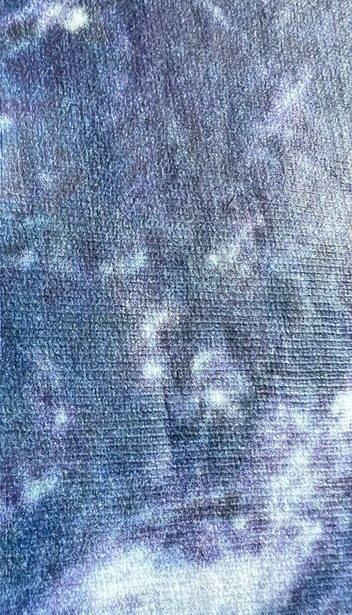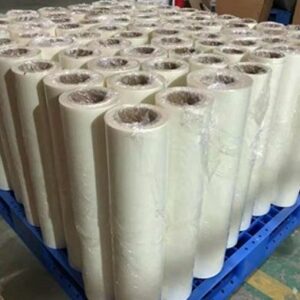In DTF printing, where creativity is limitless, adhesive edge issues in DTF Printing might show after the first wash, threatening your masterpiece. Imagine this: You’ve put your all into a design, and while the details are flawless and the colors brilliant, one wash might ruin your work. We provide the techniques in this post to help you maintain the quality of your DTF artwork so that your prints look great over several washings. Let’s tackle sticky edges’ solutions.

Understanding the problem
Let us consider a committed DTF printing enthusiast who has spent around three months honing their approach. They’ve struggled with sticky edges that disguise their prints. Here are the possible reasons behind that:
- Immediate sticky Edges: We encounter those annoying sticky edges as soon as the print is completed. These edges, although first faint, portend more danger down the road.
- Aggravation Caused by Washing: This is where things get even more annoying: after the first wash, the issue becomes worse. When dealing with black clothing, the once-subtle adhesive edges become distressingly noticeable.
- Color Complexity: We observe that when we print in colors instead than only white, this problem seems to be more severe. This version based on color raises the puzzle’s level of difficulty.

- Wet Lines of Suspicion: Immediately after the printing process, a strange wet line also forms around the print. As the adhesive powder adheres to this line, we feels it may be the cause of their sticky edge issue.
- Technical Setup: We are using Cadlink software in conjunction with an Epson L1800 DTF converted printer for our DTF operations. By using the highest white setting for this specific print, we’re pushing the envelope.
This puzzling issue plagues many DTF printing professionals. If you’re worried about those bothersome sticky edges, don’t be; we’re going to go far into analyzing the reasons and revealing the fixes.
Fixing DTF Prints’ Adhesive Edges
Film and Ink Compatibility
The film and ink must work well together for DTF printing to be successful. Many DTF community members have indicated that the professional may be having problems since they aren’t giving the printed film enough time to settle before curing. It is possible that this is the main cause of those sticky edges.
Choose Your Film
Not every film works well with every ink. Certain combinations are not optimal, resulting in the issues mentioned. The “bleeding” line around the print could be a sign of too much ink or a film’s poor absorption of it.
The answer in this case? Innovation is essential. To find the ideal match, experiment with using less ink or look at other flicks.

Humidity
Although humidity can influence several components of the printing process, the damp ring surrounding the ink on the film is not directly caused by humidity.
While excessive humidity can affect the consistency of printer nozzles and produce problems with powder clumping, sticky edges are unlikely to be the only result of this condition.
Additional Factors
We explored the potential for an oil component in the ink. The powder can cling and thicken on the medium due to oil, which is consistent with the issue description. In order to address this, they suggested many strategies:
- Cutting Ink Percentage: Cutting the ink percentage can help with the problems caused by oil and provide cleaner prints.
- Preheating the Print: Heating the print before dusting it with powder helps ensuring that the ink is absorbed and dispersed uniformly, which lowers the possibility of a wet ring.
- Appropriate Curing: It’s critical to fully cure the print right after following printing. Solidifying the ink helps avoid the issues.
- Verify the Film’s Quality: Examine the film’s quality before using it. Inadequate coatings or run-out white ink could have the potential of causing the problem with the sticky edge. Make sure your resources are adequate.
Summing up, overcoming the sticky edge problem in DTF printing is a multifaceted process that includes everything from determining the ideal ink-film match to controlling ink characteristics and providing ideal curing. Try these solutions and you’ll be well on your way to keeping your prints looking great even on the most challenging surfaces, like colorful, black clothing.
Conclusion
Mastering the art of DTF printing requires not just imaginative design but also painstaking attention to detail. The challenge of DTF adhesive edges, once a formidable foe, can be conquered with the right strategies.
With the help of ink-film compatibility, appropriate curing methods, preheating, and careful ink quality control, sticky edges can be eliminated forever. These techniques ensure that despite the challenges of washing, your DTF prints maintain their integrity and brightness.
As you continue your DTF printing experience, keep in mind that your art is elevated by the little details. Armed with these knowledge, you can create enduring, faultless prints that encapsulate your creative vision. With your DTF prints now free from the hold of sticky edges, go out, explore, and let them shine. Enjoy your printing!
FAQs
Not all ink and film combinations work harmoniously. It’s essential to experiment and find the right match for your specific printing needs to prevent adhesive edge issues.
Preheating the print helps evenly distribute ink, reducing the risk of a wet ring forming around the print. This step is crucial in preventing adhesive edge problems.
Humidity primarily affects printer nozzle consistency and powder clumping but is not directly responsible for adhesive edge issues.
If you suspect your ink has excessive oil content, consider lowering the ink percentage, ensuring proper curing, and exploring cleaner ink options to prevent powder sticking and thickening on the media.
To maintain quality on dark garments, focus on ink-film compatibility, use proper curing techniques, preheat your prints, and carefully monitor ink quality to minimize adhesive edge problems.
Yes, using expired white ink can be a contributing factor. Always ensure your ink is within its recommended shelf life to avoid print quality problems, including those edges.
Regularly inspect your film for coating imperfections or defects. Proper maintenance of your printing equipment and materials can help prevent adhesive edge problems from occurring.
Finding the optimal ink quantity may require experimentation. Start by using less ink and gradually adjust until you achieve the desired print quality without edge issues.

Ashley Wang is a skilled sales manager with knowledge in DTF printing. She presently works for ShenLan Digital, a reputable DTF printer maker. Ashley is the best person to offer advice on selecting the most suitable DTF printer because she has tested a lot of them. She launched DTFPrinterSchool to educate individuals and organizations about DTF printing technology, providing her expertise and observations on the most recent advancements in the sector. Ashley is an invaluable resource for businesses and individuals wishing to invest in DTF printing technology because of her expertise and experience in the industry.
